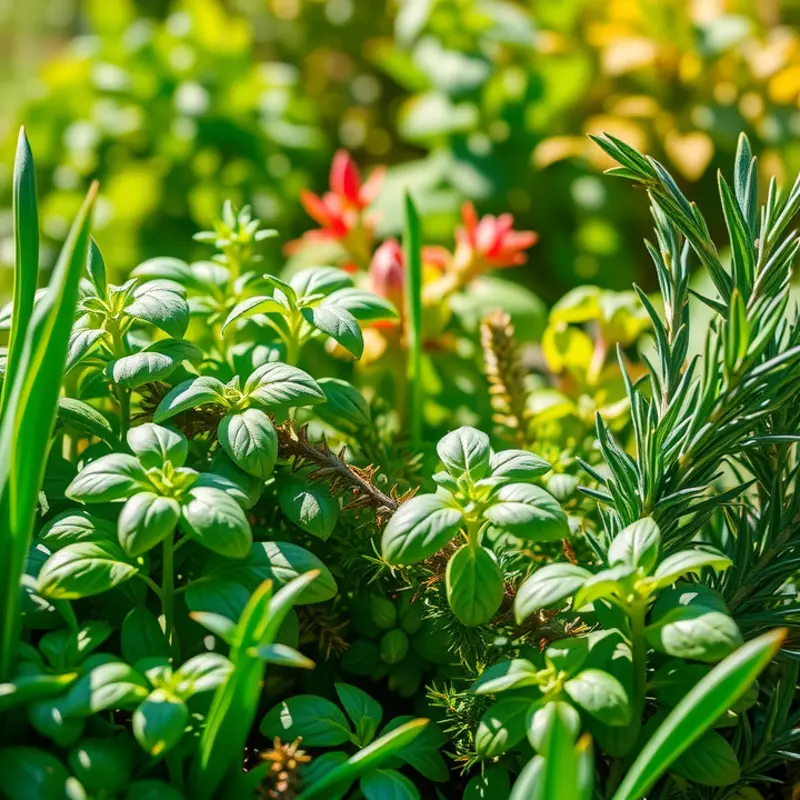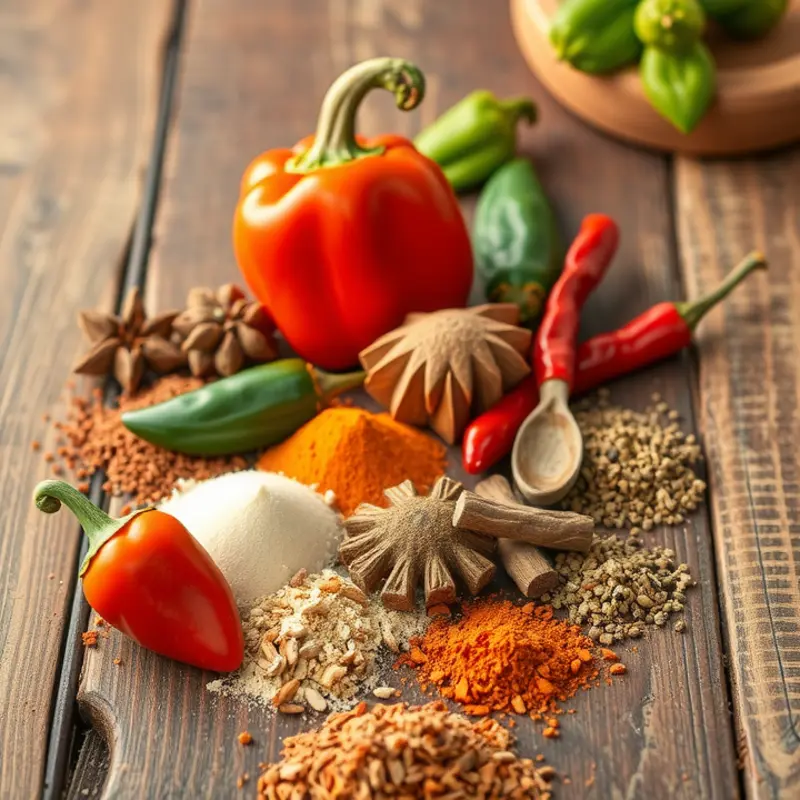For many home cooks and dietary-conscious individuals, black pepper is a kitchen staple. However, there are various reasons for avoiding this common spice, from allergies to dietary restrictions. The good news is that there are plenty of flavorful alternatives that can spice up your meals and enhance their taste. This guide is designed to help you navigate the world of spices and herbs without black pepper, ensuring your dishes remain exciting and healthy.
Herb Power: Using Fresh and Dried Alternatives

Herbs possess the unique ability to transform any dish, offering aromatic and flavorful dimensions especially valuable when avoiding black pepper. Let’s explore a selection of herbs known for their robustness and versatility, and how they can serve as potent replacements.
Basil, with its sweet aroma and subtle peppery kick, can be a delightful alternative in many recipes. Fresh basil can enhance salads, especially when paired with tomatoes and mozzarella. In its dried form, it retains a more concentrated flavor ideal for sauces and stews. To get the most out of basil, add it at the end of cooking, preserving its fragrant oils and vibrant taste.
One cannot overlook oregano when thinking of robust herb alternatives. Often utilized in Mediterranean cuisine, oregano provides a warm, slightly bitter flavor. It shines in tomato-based dishes, marinades, and rubs. Unlike basil, dried oregano can withstand longer cooking times without losing its potency, making it a staple for slow-cooked meals.
For those seeking piney, woodsy notes, rosemary is indispensable. This aromatic herb complements roasted vegetables and meats, infusing them with a savory richness. Because of its strong flavor, a little goes a long way. Use rosemary sparingly to avoid overpowering other ingredients, and when using fresh sprigs, try bruising the leaves to release their natural oils.
Another impressive substitute, thyme, brings a lemony, earthy character. Its versatility allows it to blend well with almost any dish, from soups to roasted chicken. Thyme is particularly effective when integrated early in the cooking process, allowing its fragrance to infuse the entire dish. Fresh thyme can be tied in bundles for easy removal after cooking.
Incorporating herbs into your cooking involves not only selecting the right ones but also understanding how to use them to their fullest potential. To achieve balance, consider pairing contrasting flavors: for instance, the coolness of basil with the warmth of oregano. Herbs can also elevate simpler dishes; try adding finely chopped parsley or cilantro as garnish to add freshness to a meal without the heat of pepper.
Experimentation is key. Mix and match different herbs to find your preferred combinations. Herbs not only provide flavor but also offer health benefits, supporting overall wellness in a more holistic approach to cooking. For more insights into incorporating herbs in your diet for functional benefits, explore the [Functional Herbs] guide.
By mastering the use of herbs, you can confidently forgo black pepper and still achieve vibrant, flavorful results. Adjust your seasoning to your taste and encourage a deeper connection to the natural bounty available in your kitchen.
Spice it Up: Exploring Other Spice Options

Cooking without black pepper doesn’t mean compromising on flavor. Let’s explore a variety of spices that can provide distinctive warmth, smokiness, or heat to your culinary creations. Paprika, cayenne, and cumin are all worthy substitutes that can elevate the taste profile of your dishes.
Paprika offers a mild sweetness with a hint of fruitiness and can vary in intensity from sweet to hot. It’s perfect for dishes that need color and depth without overwhelming heat. Sprinkle it over roasted vegetables or incorporate it into stews for a subtle smoky note. To balance paprika’s earthy flavors, consider pairing it with a touch of acidity like lemon juice or vinegar.
Cayenne, known for its fiery kick, is a spice that needs careful handling. A small pinch can transform a dish, delivering heat without overwhelming the palate. Try adding cayenne to your favorite chili recipe or a pot of hot soup for an immediate warmth boost. Remember, it pairs well with sweeter spices like cinnamon or nutmeg, which can round out its heat and add complexity.
Cumin brings a warm, nutty flavor, often described as earthy and slightly citrus. It’s predominantly found in Latin American, Middle Eastern, and Indian cuisines. Ground cumin is a staple for flavoring legumes, such as chickpeas and lentils, and works wonderfully in spice blends like garam masala. When using cumin, balance it with fresh herbs like cilantro or parsley to lighten its robust profile.
Mixing these spices can lead to even richer flavors. Consider a blend of paprika, cayenne, and cumin for a homemade spice mix that encapsulates warmth, heat, and earthiness in a single concoction. To create a versatile spice blend:
- 2 tablespoons of smoked paprika
- 1 tablespoon of cumin
- 1/2 teaspoon of cayenne
This blend works well as a rub for meats or a seasoning for roasted vegetables.
For those with dietary preferences, such as nightshade-free diets, cumin remains a viable option. Explore nightshade-free diets to find alternative spices and substitutions that cater to your needs.
Balancing these spices doesn’t simply enhance flavor but can add nutritional benefits. Cayenne, for example, may support metabolism, while cumin can aid in digestion. By understanding how each spice interacts, you can customize your dishes to align with dietary goals or to experiment with new taste sensations. Expand your spice repertoire and let your kitchen become a playground of bold flavors that surpass the singular note of black pepper.
Final words
Cooking without black pepper opens up a world of vibrant flavors and spices waiting to be explored. By incorporating various herbs and other spices, dishes can become exciting and flavorful, all while meeting dietary needs. Whether you’re enhancing veggies, meats, or grains, using the alternatives discussed ensures your meals remain delicious without sacrificing enjoyment. So don’t hesitate to experiment, mix, and match flavors to suit your palate and dietary preferences—taste is only limited by your creativity!







